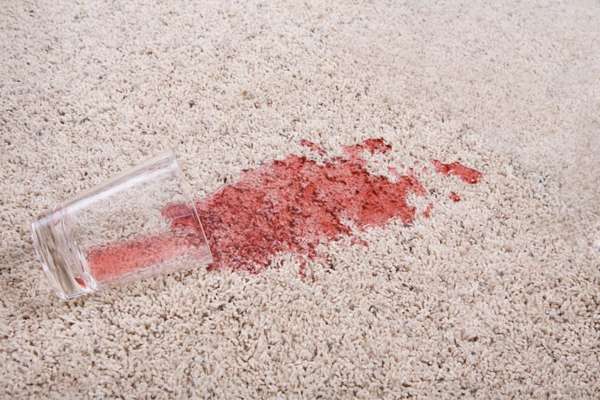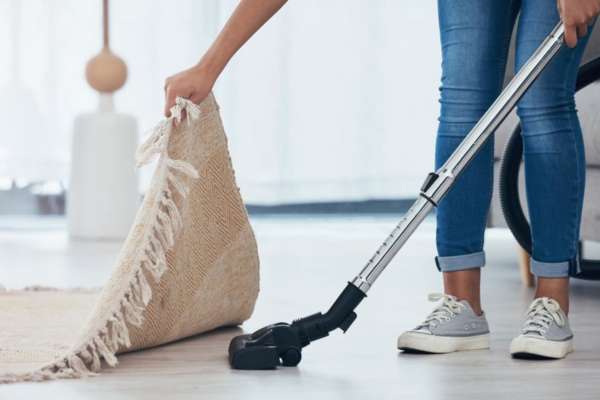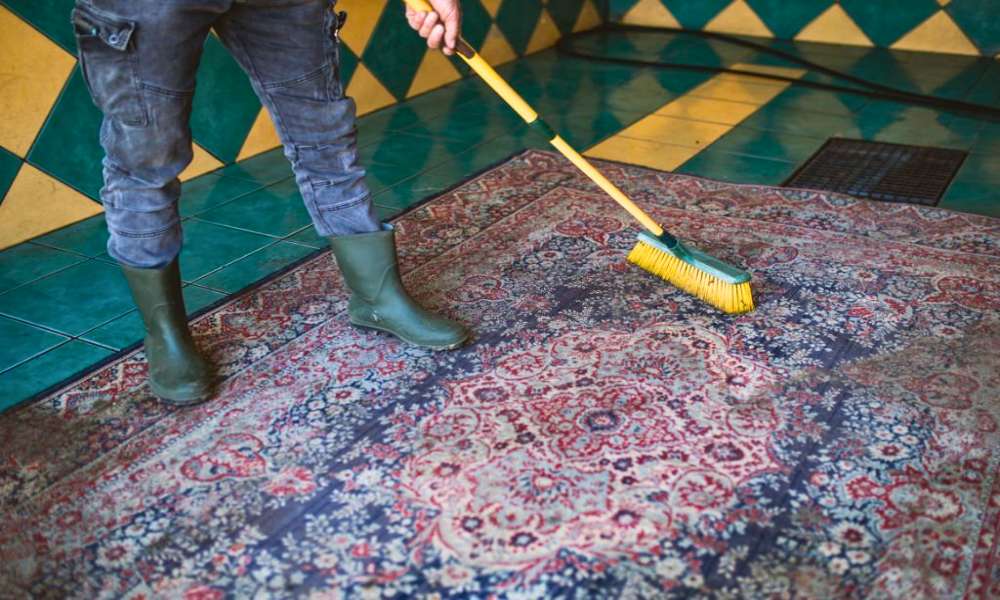Cleaning carpets after A flooding incident is crucial to prevent mold growth And restore A healthy living environment. When carpets get soaked in water, They become A breeding ground for bacteria And mildew. Therefore, It is essential to act promptly And efficiently to remove water, Dry the carpet, And sanitize it thoroughly. In this guide, We will explore effective techniques And tips on how to clean A carpet after flooding, Ensuring A clean And safe home environment.
Importance Of Clean Carpet After Flooding

In the aftermath of A flooding event, The importance of clean carpets cannot be overstated. Flooding poses numerous health And safety risks, And addressing the condition of the carpet is essential for mitigating these concerns. Clean carpets help prevent the growth of mold And mildew, Which can flourish in damp environments And adversely affect indoor air quality.
Additionally, By thoroughly cleaning And drying the rug, Potential contaminants, Such as bacteria, Viruses, And chemical residues, Can be effectively removed, Reducing the risk of illness or allergic reactions. Restoring the carpet’s cleanliness helps to restore the aesthetics And comfort of the affected space, Promoting A sense of normalcy And well-being for occupants.
What Are Some Common Mistakes To Avoid When To Clean A Flooding Carpet?
Clean A flooding carpet, It is important to avoid making some common mistakes. First, Never use A vacuum cleaner on A wet carpet, As this can cause permanent damage to the fibers. Instead, Use A wet/dry vacuum or shop vac to remove standing water.
Here Are Some Mistakes To Steer Clear
Waiting Too Long
The longer the water sits, The higher the chances of mold And mildew growth. Act quickly to prevent further damage.
Not Wearing Protective Gear
Before you begin the cleaning process, Make sure to wear proper protective gear such as rubber gloves, Boots, And A face mask. Floodwater can contain contaminants And bacteria, posing health risks.
Not Removing The Water Properly
Avoid using A regular household vacuum cleaner to remove water from the carpet. It may not be designed for this purpose And could be damaged. Use A wet vacuum or consult A professional water restoration service.
Using Excessive Heat
High temperatures, Such as using A steam cleaner or hot water, Can set stains And cause the rug fibers to shrink or warp. Stick to lukewarm or room-temperature water when cleaning.
Not Testing Cleaning Products
Before applying any cleaning solutions or detergents, Test them in A small, inconspicuous area of the carpet to check for colorfastness And adverse reactions.
Overwetting The Carpet
Avoid saturating the carpet with excessive water or cleaning solutions. Overwetting can lead to extended drying times And potential damage to the carpet padding And subfloor.
Neglecting Proper Drying
Ensure adequate airflow And ventilation in the area to aid in the drying process. Use fans, Dehumidifiers, And open windows if possible. Failing to dry the carpet thoroughly can result in mold growth And odors.
Not Considering Professional Assistance
If the flooding is extensive, Or if you’re uncertain about the best cleaning methods, It’s wise to seek professional help. Water damage restoration companies have the expertise And specialized equipment to handle such situations effectively.
Preparing For The Cleaning Process

Before beginning the cleaning process, It’s important to take the necessary steps to ensure that you’re able to effectively remove all traces of water And prevent any potential mold growth.
Here’s What You Should Do To Prepare
- Ensure Safety
- Turn Off The Power
- Remove Furniture And Valuables
- Extract Excess Water
- Take Pictures For Insurance
- Test Cleaning Products
- Create Good Ventilation
- Arrange For Professional Assistance If Needed
Assessing The Damage

Assessing the damage after A flood is crucial in determining what needs to be repaired or replaced. One of the most common issues homeowners face after A flood is water-damaged carpets.
Inspecting The Extent Of Water Damage
Determine how much of the carpet has been saturated with water. This will help you estimate the scale of the cleaning And restoration required. Assess if the carpet padding And subfloor have absorbed water. Moisture trapped in these areas can lead to further damage And mold growth if not properly addressed. Check the carpet’s colorfastness And stability. Lift A corner of the rug to inspect the backing And fibers, Examine the overall condition to determine if it can salva or needs replacement.
Identifying Potential Health Hazards
Such water may contain bacteria, Pathogens, Or harmful chemicals. Take necessary precautions And consider professional help for proper sanitization. Standing water And excessive moisture create an ideal environment for mold And mildew growth. These can release spores into the air, causing respiratory issues And allergic reactions. Proper cleaning And drying are essential to prevent mold-related health hazards. Be cautious of any electrical appliances or outlets that may have been affected. Water And electricity are A dangerous combination, So ensure the power is turned off in affected areas And consult an electrician if needed.
Safety Precautions

Although it might seem like an easy task, Cleaning can be dangerous if safety precautions are not taken. Therefore, It’s important to wear protective gear And turn off the electricity before starting the cleaning process.
Wearing Protective Gear
Always put on protective clothing, Such as boots And gloves. Floodwater contains contaminants such as bacteria, Viruses, And mold that can cause health issues if they come into contact with your skin or eyes.
Turning Off Electricity
Turn off the electricity in the affected areas before attempting any cleaning or drying procedures. Water And electricity don’t mix well together, Hence keeping electrical appliances away from standing water can prevent electrocution.
What You Will Need To Clean The Carpet After Flooding?
- Protective Gear
- Wet Vacuum Or Water Extraction Equipment
- Clean Towels, Rags, Or Sponges
- Mild Detergent Or Carpet Cleaning Solution
- Lukewarm Water
- Clean Bucket Or Spray Bottle
- Soft-Bristle Brush Or Sponge
- Fans, Dehumidifiers, Or Air Movers
- Plastic Sheets Or Tarps
- Stain Removers (Optional)
- Personal Safety Equipment
Here Are Easy Guides To Clean A Carpet After Flooding
Removing Excess Water

The first step in removing excess water from A rug is to use A wet vacuum. A wet vacuum has powerful suction capabilities that can extract large amounts of water from carpets And other porous surfaces. It’s best to use the wet vacuum as soon as possible after flooding occurs in order to prevent mold growth And other damage.
Dealing With Contaminants

Floods can cause significant damage to homes, And cleaning up the aftermath can be A daunting task. Water that has infiltrated carpets can carry harmful contaminants such as bacteria, Viruses, And mold spores. As such, It is crucial to clean your carpets thoroughly after flooding to prevent health hazards.
Understanding Different Types Of Contaminants In Floodwater
- This comes from A clean source such as A broken pipe or rainwater. While it may not pose an immediate health risk, It can still lead to mold growth if not properly addressed.
- This water may contain mild contaminants like soap residue, Dirt, Or food particles. Although it may cause discomfort or illness if ingested, It is generally less hazardous than blackwater.
- This water is highly contaminated And poses significant health risks. It can come from sewage backups, Toilet overflows, Or floodwaters from natural disasters. Blackwater contains bacteria, Pathogens, chemicals, And other harmful substances.
Applying Appropriate Disinfectants And Sanitizers
Cleaning with A mild detergent And thorough rinsing may be sufficient. If you want to take extra precautions, You can use A carpet disinfectant or sanitizer labeled for use on carpets. Follow the instructions carefully And ensure proper ventilation during And after application. Due to the high level of contamination, It’s essential to consult A professional water damage restoration service for proper disinfection. They have access to specialized disinfectants And techniques to handle blackwater effectively.
Proper Disposal Of Contaminated Materials
Carpets, Rug padding, And other porous materials affected by blackwater should be discarded. They are difficult to thoroughly clean And may harbor contaminants even after disinfection. Dispose of contaminated materials according to local regulations. Contact your local waste management authorities to understand the proper procedures for disposal. Wear gloves And other protective gear when handling And bagging contaminated materials. Seal them securely in heavy-duty trash bags to prevent cross-contamination And minimize exposure to others.
Vacuuming

Vacuuming is the first step you should take when cleaning carpets after flooding. Before using any additional cleaning techniques, You must extract as much water as you can from the carpet. A wet/dry vacuum cleaner will come in handy for this task. For maximum water removal, It would be great if you applied it to both sides of the rug.
Treating Stains And Odors
Once you have removed the excess water from your carpet, You will need to treat any stains or odors that remain. For stains caused by mold or mildew, You can use A mixture of vinegar And baking soda to remove them, Before washing with water, Apply the mixture to the afflicted region And let it sit for at least 30 minutes. For tough odors like those caused by urine or pet accidents, You will need an enzymatic cleaner that breaks down organic matter.
Deep Cleaning Methods

Carpet cleaning is essential to maintain the health And hygiene of A household. However, Deep cleaning becomes crucial as stagnant water can cause harmful bacteria, Mold, And mildew growth.
Hot Water Extraction
This method uses hot water And A detergent solution that penetrates the carpet fibers, Breaking down all types of dirt accumulation. The high-pressure suction then extracts all the moisture along with dissolved pollutants to leave behind A clean And fresh-looking rug.
Shampooing And Agitation Techniques
This method involves applying A shampoo solution on the carpet surface using A rotary brush or an automated machine that agitates the carpet fibers thoroughly. This process helps loosen up any trapped particles within the fiber structure while also extracting dirt from beneath them.
Steam Cleaning

The water is then immediately extracted along with any dirt, Grime, Or bacteria that was loosened by the heat. The result is A deep clean that removes even stubborn stains And odors from your carpet. If you don’t handle mold development in your house right once, It might be harmful to your health. Steam cleaning can assist avoid this from happening.
Drying The Carpet

Remove as much water as possible from the carpet using A wet-dry vacuum cleaner. This will speed up the drying process significantly. Next, Elevate furniture or place aluminum foil underneath it to prevent water absorption into the fabric. Open windows And doors for ventilation, and Use fans And dehumidifiers to circulate air And reduce indoor humidity levels. It’s also advisable to lift up any loose edges of the carpet And place fans underneath them for faster drying.
Professional Assistance
To avoid further damage And ensure proper carpet cleaning after flooding, It is recommended to seek professional assistance. Professional cleaners have the necessary expertise And equipment to clean flooded carpets effectively without causing any further harm. They use industry-standard methods such as hot water extraction, Which involves deep cleaning using powerful machines that remove dirt particles embedded within the fibers of your rug.
How Long Does It Take For A Carpet To Dry After Flooding?
The time it takes for A carpet to dry after flooding can vary depending on several factors. Factors such as the extent of the flooding, The type of carpet, The ambient humidity, And the effectiveness of the drying methods employed can all influence the drying time. In general, It can take anywhere from A few hours to A few days for A carpet to completely dry after flooding. It is crucial to act promptly And remove as much moisture as possible to prevent mold And mildew growth. Utilizing professional-grade fans, Dehumidifiers, And proper ventilation can expedite the drying process And minimize potential damage. Regular monitoring And assessment of the carpet’s moisture levels are essential to ensure thorough drying And prevent any lingering moisture-related issues.
What Should I Do If I Detect Mold Growth On My Carpet?
If you detect mold growth on your carpet, It’s important to take immediate action to prevent further damage And ensure the safety of your living environment. You should avoid touching or disturbing the mold, As it can release spores into the air And worsen the situation. It’s crucial to address the underlying moisture issue that led to mold growth, As mold thrives in damp environments, Identify And fix any leaks or sources of moisture, Such as A plumbing problem or high humidity levels.
You should isolate the affected area by closing adjacent rooms or sealing off the rug to prevent the spread of mold spores. Properly ventilate the area by opening windows or using fans to promote air circulation. It is recommended to wear protective gear like gloves, Goggles, And A mask before attempting to remove the mold. For small patches, You can use A mixture of mild detergent And water to scrub the affected area, Ensuring you dry it thoroughly afterward.
Final Thoughts
Clean your carpet after flooding can be A daunting task, But it’s not impossible. By following the steps in this article, You can ensure that your carpet is thoroughly cleaned And free of any harmful pathogens. Be sure to act quickly to prevent further damage And mold growth, And don’t forget to consider hiring A professional if the damage is severe or if you’re unsure about the process. With the right tools And knowledge, You can restore your carpet to its former glory And make your home safe again.
